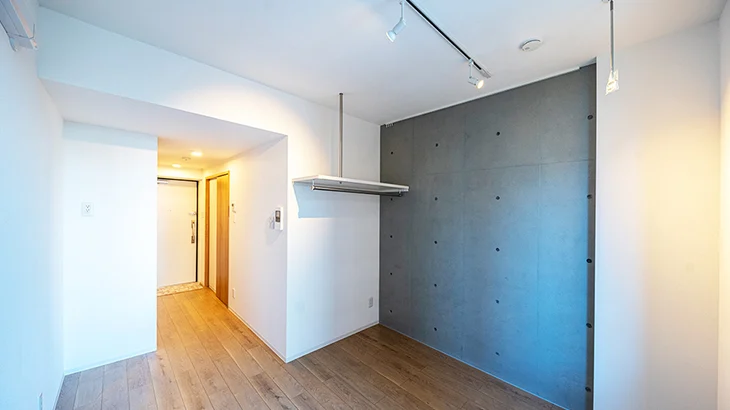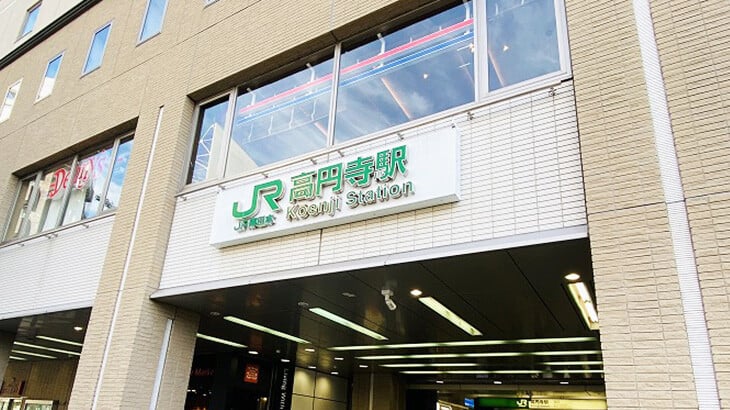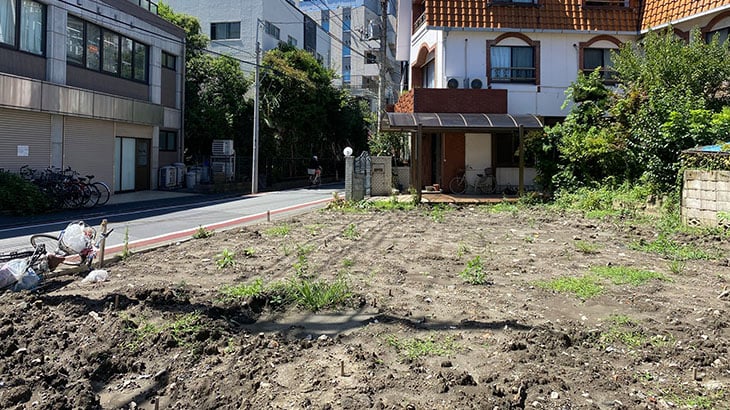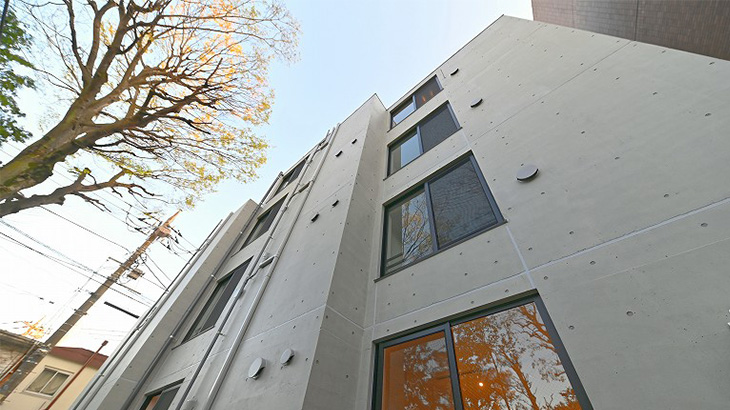Updated Information
Categories
Popular

What is 1R, 1K, 1DK and 1LDK
Property Knowledge

Essential Knowledge for Property Investment in Japan (Part 1): Understanding Japan’s Earthquake Resistance Standards
Property Knowledge

Exploring Koenji: A Harmonious Blend of City Convenience and Creative Culture
Exploring Tokyo

What are the costs incurred when buying a property in Japan?
Property Knowledge

Essential Knowledge for Property Investment in Japan (Part 2): Understanding Japan’s Earthquake Resistance Structures and Technology
Property Knowledge

What is the tendency of Land Price in Japan in 2023?
Market Information
The trend of Tokyo Population and Real Estate Market in 2022
It was once widely reported that the population of Tokyo was temporarily declining due to the influence of COVID-19 and the new trend of telework, which caused the population to disperse to other cities and suburbs.
However, despite the continued prevalence of COVID-19, the population of Tokyo, including the number of foreigners entering the country, has begun to increase recently. This article will reveal the latest trend in the population of Tokyo and the real estate market.
■ What is the most updated change of Population movement in Tokyo?
According to the “Basic Resident Registration Population Movement Report” of the Ministry of Internal Affairs and Communications, before the spreading of COVID-19 in 2019, the net change of the population movement in Tokyo was 82,982 people. However, this figure, which has been affected by the spreading of COVID-19 and the declaration of the first state of emergency in April 2020, has sharply dropped from 51,857 to 31,125 in 2020, with a negative year-on-year growth rate of 62.5%. In 2021, the net change in the move-in and move-out population in Tokyo was 5,433 people, which is still hardly comparable to that figure in 2019.


Nevertheless, the data from the report revealed there is a positive change in population growth in Tokyo this year when comparing the figures in March of the past 3 years, as the month of March is the peak month of population movement in a year. (In Japan, the new school year starts in April, and most of the university graduates also start their first job in April, which leads to high population movement in March.) Before the first state of emergency declared in April 2020, the net population change in March was 40,199 people. In March 2021, the figure dropped to 27,803 (-30.8%), which was only 69.2% of the previous year. This figure rose again in March 2022, with a net increase of 33,171 people, which was 119% of the previous year and rebounded to 82.5% of that in 2020.


By further analyzing the monthly data, it is discovered that other than April and June in 2020, with an increase of 4,532 people and 1,669 people respectively, as well as March and April in 2021, with a positive increment, the net growth of population movement in the rest of the months from April 2020 to December 2021 is negative.
Yet, the net change in population movement in Tokyo in the first six months of 2022 (January–June), turned positive again. Though the increment is slight, the trend of population decline in Tokyo seems to have ended. This highlights the turning point of the growth of the population in Tokyo.
■ What is the main reason for the decline of population during COVID-19?
Besides, the data on the population movement profile has indicated that Tokyo is still the most popular city among young people in Japan. According to data from March 2022, a total of 51,013 people between the ages of 15 and 24 moved into Tokyo, accounting for 51.6% of the total number of move-in people in Tokyo (98,812). Despite these encouraging figures, someone has pointed out that there will still be a downward trend in population in Tokyo temporarily because of the popularity of telework.
However, by referring to another report published by the Ministry of Internal Affairs and Communications, which included data on population, demographic trends, and the number of households, it is discovered that the decline of population in Tokyo was mainly caused by the reduction of the population of foreigners instead of teleworking.
The total population change is based on two categories of collected data. One is the data on natural change, which is generated from the difference between the number of births and deaths. The other is data on social change, which is generated by the movement of people.
As per the data in 2019, the net increase in population in Tokyo was 94,193 people, with 68,547 Japanese (natural change was decreased by 18,761 and social change was increased by 87,308) and 25,646 foreigners (natural change was increased by 2,511, social change was increased by 23,135). In 2020, the figure was dramatically dropped to 8,600 people (only 9.1% of the previous year), with an increase of 39,493 Japanese (natural change was decreased by 21,008, social change was increased by 60,501), and a reduction of 30,893 foreigners (natural change was increased by 2,469, social change was decreased by 33,362).
According to the data presented above, approximately 66% of the population reduction in 2020 was caused by those foreigners, who significantly contributed to Tokyo’s population growth, but have not returned to the country since leaving.
In 2021, there was a further significant drop in foreigners’ population of 28,555, with social change decreasing by 30,746 and natural change increasing by 2,191. With the reduction of natural change by 10,000 more to 32,873 and the reduction of social change to 12,841, the population of Japanese was reduced by 20,037. Nevertheless, since the government relaxed the entry restrictions in March 2022, it is expected that the number of foreigners entering the country will rebound.

■ What is the trend of Tokyo Population in the past 10 years?
By examining population data over the last ten years, it was discovered that the number has increased year after year prior to the spread of COVID-19 in 2020. The population of Tokyo was 13,309,575 in 2013 and has increased to 14,036,721 in 2020, with a growth rate of 5.46% in 8 years. Even though it once dropped to 13,988,129 in 2021 due to COVID-19, the population has increased again this year. As per the figure in October 2022, the population in Tokyo has a significant growth rate of 0.35%, and the figure of 14,040,732 is even higher than that in 2020. This means that the population in Tokyo has recovered. Moreover, the data from the Ministry of Internal Affairs and Communications not only revealed the trend of population movement in Tokyo, but also hinted at the future tendency of the property market in Tokyo.

* The population in 2022 in the above graphic is based on the data from January to October 2022.
■ How does the changing population profile affect the property market?
In Tokyo, there are about 16% of the couples whose average annual household income is within 10 million to 12 million Japanese yen. They are named “power couples,” that both of them are working and earning a decent income. As revealed from the data, there are 289,009 households with annual income between 10 and 12 million yen and 684,800 households with annual income over 10 million yen.
The above-mentioned data for household annual income have given a cue for the reason behind the surging price of new condominiums recently, which is even higher than it was during the economic bubble boom period (December 1986-February 1991) in Japan. Also, the data supports the anticipation that the second-hand condominium market, even with a significant rise in price, will still be very strong.
To summarize, while net population growth in Tokyo was sharply reduced at the start of COVID-19, there has recently been a trend toward recovery. By revealing the figures of the month of March during 2020–2022, there was a net increase of 33,171 people in March 2022, which was 119% of the previous year and rebounded to 82.5% of that in 2020. Besides, the data also highlights that Tokyo is still the most popular city among young people (aged 15–24). Instead of the telework trend slowing population growth, one of the primary reasons is that those foreigners, who have significantly contributed to Tokyo’s population growth, have not returned since leaving the country. Most importantly, with the majority of high-income couples residing in Tokyo, the high price of new and used condominiums appears to be sustainable.

* All the data and graphics in this article are based on the figures in the reports of the Ministry of Internal Affairs and Communications of Japan.
~ END ~
If you would like to learn more about property investment in Japan, please click here. >
・Recommended Articles

Property Knowledge2022.9.22
A guide for foreigners buying real estate in Japan.
Topic: Property Information Post on 2022.9.22 Basically, the procedure of buying real estate in Japa […]

Market Information2022.7.12
What is the most updated land value in Tokyo and the changes in 5 years ?
In Japan, property prices are decided by both land and buildings value. Although there is a tendency that the […]

Property Knowledge2022.7.4
NEW OR OLD? Which one is better for property investment in Japan?
Is it better to invest in a new construction property or a second-hand one?What are the factors affecting the […]

Property Knowledge2022.4.2
Why Reinforced Concrete (RC) Residential Building is good for long-term investment?
Buildings of reinforced concrete offer several advantages including long life and less maintenance, this is es […]
Subscribe for Latest Property News
Don’t miss out! Subscribe now to stay tuned to the latest trends, news, and listings in Japan’s real estate market.




